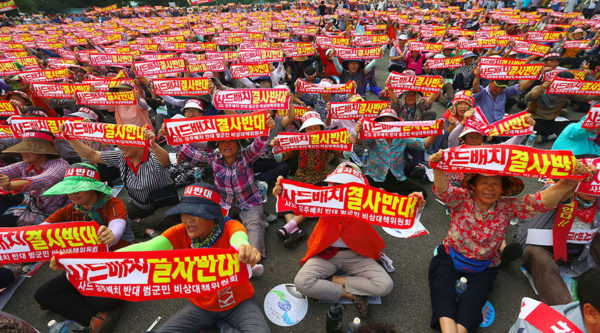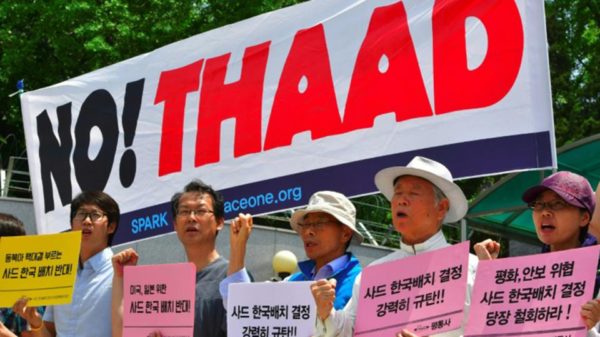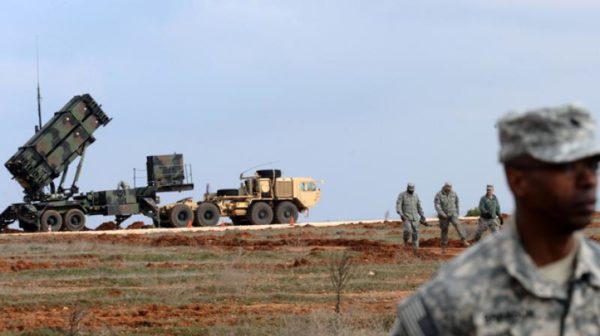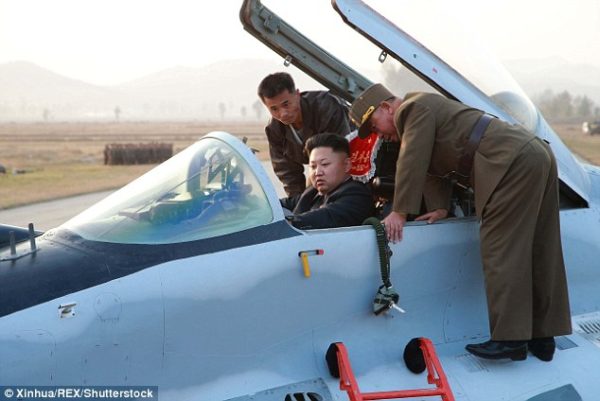
Thousands of protesters have taken to the street in South Korea to protest against the United States installation of a missile defense system in the country.
Many of the protesters have resorted to hunger strikes, in order to send a signal to the country’s government that they are serious about safety concerns of the yet-to-be deployed system.
Recently, South Korea’s military announced the installation of what is known as Terminal High-Altitude Area Defense System (THAAD), which the military claimed is intended to deter threats from North Korea. The anti-missile defense system was given to South Korea by the United States.
Apart from the current protest against the installation of the system, regional powers in the Far East (especially China), have also expressed grave concern about the installation of THAAD. RT English News reports that China believes the deployment of THAAD in the region is not necessarily against North Korea, as the United States wants to use North Korea as a pretext to target China. Russia too, has expressed worry that the facility will exacerbate the already cold relationship between the South and the North, urging the United States not to deploy THAAD to escalate tensions in the region.
However, all these concerns have fallen on ‘deaf ears.’ On Wednesday July 13, the South Korean government revealed the location of the installation of THAAD to be Seongju County in North Gyeongsang Province, about 217km southeast of the national capital, Seoul.
A Deputy at the Ministry of National Defense, Yoo Jeh-seung in a news conference: “South Korea and the US’ joint working group have proposed the Seongju area, North Gyeongsang Province, as the optimal place for the deployment … and the countries’ defense ministers have approved it.”
Before this announcement by the Ministry of Defense, in areas where it was rumored that THAAD was going to be placed, local officials organized protests, warning the government not to bring the facility on their land.
When the announcement was finally made, thousands of protesters, mainly farmers in Seongju County, immediately took to the street to protest. The County’s governor, Kim Hang-gon backed the protesters. He has officially written to the government in Seoul explaining why his people are against the installation of the facility in the area.
Governor Hang-gon and his people suspect that the placing of THAAD in the area will effect the health status of people, animals and crops. They claim the high-powered radar will lead to infertility and cancer.
During the protest, protesters chanted: “We oppose THAAD with our lives!” Some also held banners and placards with the same words written on it.
Governor Hang-gon told the protesters: “If we lose our precious land to THAAD, we will be ashamed before our ancestors and posterity.” It is said Seongju County has about 50,000 farmers. The farmers mainly cultivate melons. The County is said to provide more than 60% of South Korea’s melons.
Many of the farmers have, since the protest, gone on hunger strike, vowing never to eat until the government rescinds its decision not to bring THAAD to the area.
However, the South Korean government is determined to have the radar system installed in the country. Both South Korea and the United States hope that by late 2017, the final battery of the radar will be installed.
The South Korean military has chosen the top of Seongju Mountain, which is near to one of the country’s Air Force Radar and Military bases. The government believes this location would allow the country’s military to defend two-thirds of its territory from potential attack from North Korea.
Meanwhile, reports from North Korea indicate that the country’s intelligence officers are closely monitoring the new development in the South. The country’s leader, Kim Jong-un is said to be secretly preparing his nuclear arsenals, and might be tempted to strike if the radar system is finally installed in the South.
We are closely monitoring the volatile situation in the region.
You want to support Anonymous Independent & Investigative News? Please, follow us on Twitter: Follow @AnonymousNewsHQ
This article (South Korean Protesters Go On Hunger Strike, Protesting Against Installation of U.S. Missile Defense System) is a free and open source. You have permission to republish this article under a Creative Commons license with attribution to the author and AnonHQ.com.









territory